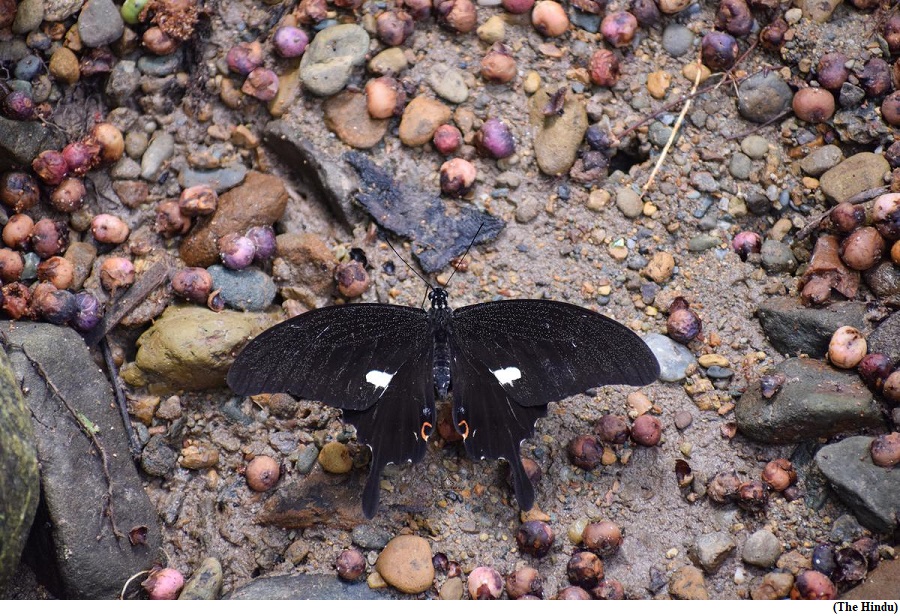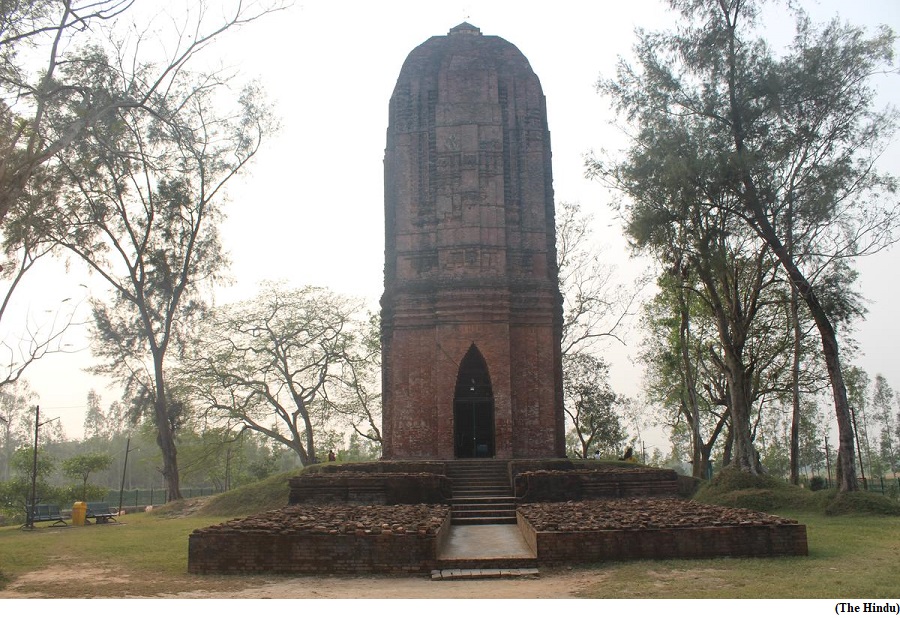Noble’s Helen: Arunachal Pradesh yields India’s newest butterfly (GS Paper 3, Environment)

Why in news?
- A swallowtail butterfly disappearing from its previously known ranges from Myanmar and southern China to Vietnam has been recorded for the first time in India.
- Three butterfly enthusiasts recorded the “extremely rare” Noble’s Helen (Papilio noblei) from three locations in the Namdapha National Park of Arunachal Pradesh between September 2019 and September 2021.
Details:
- Butterflies are considered vital indicators representing the state of biodiversity and key ecosystem functions.
- The trio photographed the Noble’s Helen live from 19th Mile, Lunkai Nala, and near Deban Camp within the 1,985 sq. km-Namdapha, also India’s easternmost tiger reserve.
- The locations are approximately 80 km aerially from Putao of Myanmar’s Kachin State, where this species of swallowtail butterfly was last recorded in April 1999.
Habitat:
- The Noble’s Helen, closest to the Papilio antonio from the Philippines and characterised by a much large dorsal white spot, was once common in the montane forest at moderate elevations in northern Thailand.
- Apart from Thailand, this species of swallowtail butterfly has been reported from Myanmar, Yunnan and Hubai regions of China, Laos, Cambodia and Vietnam.
Characteristic feature:
- The Noble’s Helen with a wingspan of 100-120 mm was initially thought to be an aberration of the Papilio helenus although the former has an extra white spot in the dorsum of the forewing.
- A closer study showed the Papilio noblei sports a consistent white spot and has a complete row of red lunules on the underside of the hind wing and discal white areas on the upper side of the hind wing.
Sea winds erode Sundarbans temple
(GS Paper 3, Environment)
Why in news?
- An ancient terracotta temple in West Bengal’s Sundarbans, which has survived the ravages of time for a millennia, is now facing a very modern threat.
- The impact of climate change, especially the increase in air salinity, is gradually eroding the outer wall of Jatar Deul, an 11th century Shiva temple, which is located at Raidighi in South 24 Parganas, only a few kilometres from the sea.

Visible erosion:
- While the temple is 98 feet high, the archaeologist said the erosion is particularly seen in the bricks on the outer wall up to a height of 15 feet.
- The temple stands on a vacant site. There are some trees to provide a barrier to coastal winds, particularly on the upper part of the temple, and that can be the reason that erosion is less on the upper side of the temple.
- Amphan, the tropical cyclone that ravaged coastal West Bengal, particularly the Sundarbans, in May 2020, had destroyed three trees at Jatar Deul, further exposing the temple to the gusty salt-laden coastal winds.
- The archaeologist said that along with the restoration of the structure, the ASI has also planted trees at the site so that they can serve as a barrier to the temple.
Historical aspect:
- The Jatar Deul is traditionally connected to an inscription, no longer traceable, by one Raja Jayantachandra, purported to have been issued in 975 AD.
- The temple is datable to the 10th or 11th century AD on the basis of its architecture.
- An expert on West Bengal temples, disagrees with the dating estimate, saying that the temple was more likely to have been built around the beginning of the 13th century based on its architectural features.
Architecture:
- The stone temples located along the coast such as the famed Konark temple of Odisha are less affected by salinity since the porosity of stone is far less than that of brick.
- Jatar Deul is the tallest standing temple in the Sundarbans on the bank of the river Moni.
- The temple has a curvilinear tower similar to temple architecture of the Nagara order of Odisha temples.
Mughal Gardens is now Amrit Udyan
(Miscellaneous)
Why in news?
- The Rashtrapati Bhavan gardens, popularly known as the Mughal Gardens, was renamed Amrit Udyan.
- The garden is thrown open to the public for a limited period during spring each year.

About Amrit Udyan:
- Designed by Edwin Lutyens, the iconic garden is spread across 15 acres and it incorporates both Mughal and English landscaping styles.
- The main garden has two channels intersecting at right angles dividing the garden into grid of squares, a Charbagh (a four-cornered garden), a typical characteristic of the Mughal landscaping.
- There are six lotus-shaped fountains at the crossings of these channels rising to a height of 12 feet. The garden houses nearly 2,500 varieties of dahlias and 120 varieties of roses.
New additions:
- During the term of former Presidents Dr. APJ Abdul Kalam and Ram Nath Kovind more gardens were developed including- two herbal gardens, a tactile garden and a Bonsai Garden.
- President Kalam had also constructed a Manipuri style thinking hut at the gardens, where he claimed he wrote two of his books.
- In 2010, an expert restoration committee- demolished the hut since the committee felt that it interfered with the original design.
- One of the modern-day musical fountains that President Kalam had installed was also removed since the committee felt that it defiled the heritage character of the gardens.




